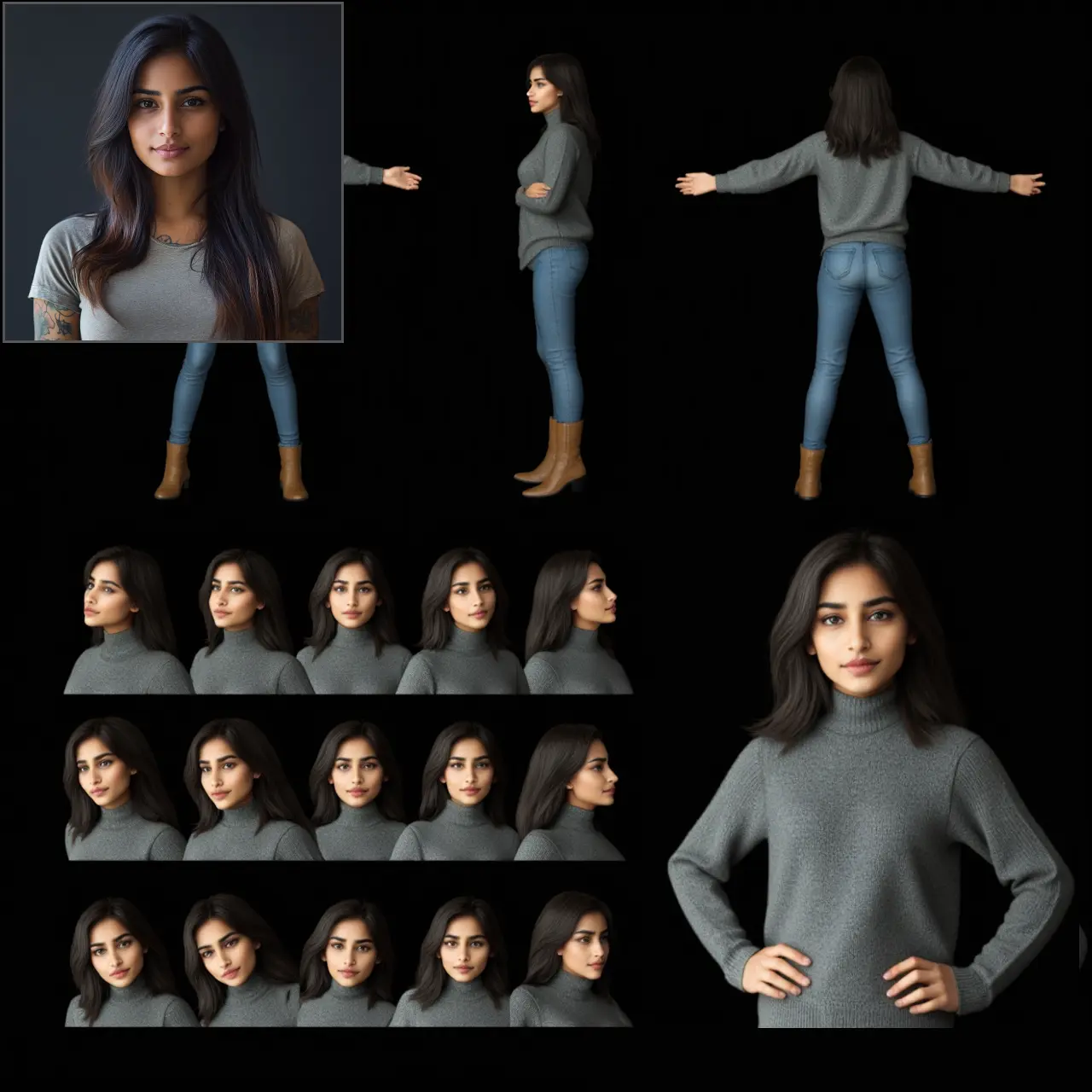ComfyUI Node: D2 XY Checkpoint List
D2 XY Checkpoint List
CategoryD2/XY Plot
da2el-ai (Account age: 713days) Extension
D2 Nodes ComfyUI Latest Updated
2025-05-04 Github Stars
0.03K
How to Install D2 Nodes ComfyUI
Install this extension via the ComfyUI Manager by searching for D2 Nodes ComfyUI- 1. Click the Manager button in the main menu
- 2. Select Custom Nodes Manager button
- 3. Enter D2 Nodes ComfyUI in the search bar
Visit ComfyUI Online for ready-to-use ComfyUI environment
- Free trial available
- 16GB VRAM to 80GB VRAM GPU machines
- 400+ preloaded models/nodes
- Freedom to upload custom models/nodes
- 200+ ready-to-run workflows
- 100% private workspace with up to 200GB storage
- Dedicated Support
D2 XY Checkpoint List Description
Facilitates selection and management of checkpoints in ComfyUI for AI art generation tasks, enhancing workflow efficiency.
D2 XY Checkpoint List:
The D2 XY Checkpoint List node is designed to facilitate the selection and management of checkpoints within the ComfyUI environment. This node allows you to easily access and utilize a list of available checkpoints, which are essential for various AI art generation tasks. By providing a structured way to handle checkpoints, this node enhances workflow efficiency and ensures that you can quickly switch between different models or configurations. The primary goal of this node is to streamline the process of checkpoint management, making it more intuitive and less time-consuming for users, especially those who may not have a deep technical background.
D2 XY Checkpoint List Input Parameters:
positive
This parameter accepts a string input that can be multiline. It is used to define the positive conditions or prompts that will guide the AI model during the generation process. The content of this parameter can significantly influence the output by emphasizing certain features or styles.
negative
Similar to the positive parameter, this accepts a multiline string input. It is used to specify negative conditions or prompts, which help in suppressing unwanted features or styles in the generated output. This can be crucial for refining the results and ensuring they meet specific artistic criteria.
ckpt_name
This parameter allows you to select a checkpoint from a list of available checkpoints. The list is dynamically generated from the files in the "checkpoints" directory. Selecting the appropriate checkpoint is vital as it determines the model's behavior and capabilities during the generation process.
seed
An integer parameter with a default value of 0, which can range from 0 to 0xffffffffffffffff. The seed is used to initialize the random number generator, ensuring reproducibility of results. By setting a specific seed, you can achieve consistent outputs across different runs.
steps
This integer parameter defines the number of steps for the generation process, with a default value of 20 and a range from 1 to 10000. More steps generally lead to more refined outputs, but also increase computation time.
cfg
A float parameter with a default value of 7.0, ranging from 0.0 to 100.0. It stands for "classifier-free guidance" and controls the trade-off between following the prompt and maintaining the model's learned distribution. Higher values make the output more prompt-specific.
sampler_name
This parameter allows you to choose a sampler from a predefined list. The sampler affects how the model explores the latent space and can influence the style and quality of the generated images.
scheduler
Similar to the sampler_name, this parameter lets you select a scheduler from a predefined list. The scheduler determines the sequence and timing of the sampling process, impacting the overall generation dynamics.
denoise
A float parameter with a default value of 1.0, ranging from 0.0 to 1.0. It controls the level of noise reduction applied during the generation process. Lower values can retain more details, while higher values may smooth out the output.
x_type
This parameter specifies the type of input for the x-axis in the XY plot. It is crucial for defining how the data is visualized and interpreted in the context of the plot.
x_list
A multiline string parameter that lists the values or conditions for the x-axis in the XY plot. This list is used to iterate over different scenarios or configurations during the generation process.
y_type
Similar to x_type, this parameter defines the type of input for the y-axis in the XY plot. It helps in structuring the data visualization and analysis.
y_list
A multiline string parameter that specifies the values or conditions for the y-axis in the XY plot. It complements the x_list by providing a second dimension for exploration and comparison.
auto_queue
A boolean parameter with a default value of True. When enabled, it automatically queues the tasks for processing, streamlining the workflow and reducing manual intervention.
start_index
An integer parameter with a default value of 0. It determines the starting point for processing within the list, allowing for partial or segmented execution of tasks.
D2 XY Checkpoint List Output Parameters:
D2_TD2P
This output parameter represents the processed data or results from the node's execution. It encapsulates the outcomes of the generation process, including any modifications or transformations applied based on the input parameters. Understanding this output is crucial for evaluating the success and quality of the generated content.
D2 XY Checkpoint List Usage Tips:
- Ensure that the
ckpt_nameparameter is set to a valid checkpoint to avoid errors and ensure the model functions correctly. - Experiment with different
seedvalues to explore a variety of outputs and find the most aesthetically pleasing results. - Adjust the
stepsandcfgparameters to balance between computation time and output quality, especially for complex or detailed prompts.
D2 XY Checkpoint List Common Errors and Solutions:
Invalid checkpoint name
- Explanation: This error occurs when the
ckpt_nameparameter is set to a checkpoint that does not exist in the specified directory. - Solution: Verify that the checkpoint name is correct and that the file is present in the "checkpoints" directory.
Seed value out of range
- Explanation: The
seedparameter is set to a value outside the acceptable range. - Solution: Ensure the seed value is within the range of 0 to 0xffffffffffffffff.
Steps value too high
- Explanation: The
stepsparameter exceeds the maximum allowed value, leading to excessive computation time. - Solution: Reduce the steps value to a number within the allowed range, considering the trade-off between quality and performance.
D2 XY Checkpoint List Related Nodes
RunComfy is the premier ComfyUI platform, offering ComfyUI online environment and services, along with ComfyUI workflows featuring stunning visuals. RunComfy also provides AI Playground, enabling artists to harness the latest AI tools to create incredible art.



